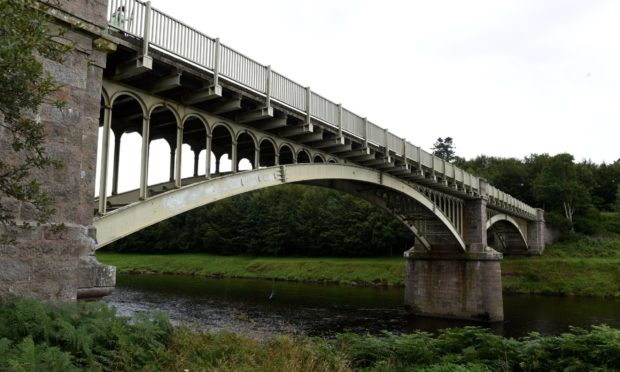The “eye-watering” cost of maintaining Aberdeenshire Council’s 3,500 miles of road have been laid bare – with a warning it would take more than four centuries to resurface the carriageways if the current level of spending continues.
A report discussed by councillors yesterday indicated investment is this year around £10 million short of required levels just to keep the network in its current condition.
The infrastructure services committee heard – on current spending levels – a stretch of road would typically only be resurfaced once every 441 years, with pavements waiting for a once-in-1,994-year treatment.
More than a quarter of Aberdeenshire’s street lights and more than a third of traffic signals have passed their expected shelf life.
The cash-strapped local authority has already been forced to close 14 bridges to vehicles – due to being rated “black” for their condition – splitting communities and forcing residents to undertake miles-long diversions.
Across the region, the council is also responsible for the upkeep of 1,303 crossings and structures.
The report, from head of roads Philip McKay, warned: “Looking forward, even pre-Covid-19 spending levels would be insufficient to maintain all our infrastructure assets in their current condition and tough decisions will need to be made regarding prioritisation.”
Council officers warned road maintenance had been “drastically reduced” due to the pandemic, with only around a fifth of scheduled surface repairs being carried out.
The far-reaching report illustrates the huge cost of replacing Aberdeenshire’s roads, bridges, footways, traffic lights and street lights – something not reflected on the local authority’s books.
Calculated to give a better understanding of the challenge ageing infrastructure poses, the grand total, minus depreciation, comes to more than £4.1 billion.
Many road assets, once the initial cost of paying for them is covered, are listed as having no monetary value in the accounts.
By comparison, the total value of all of the council’s other physical assets listed in accounts for 2019/20 was £1.9 bn.
Councillors, looking ahead to budget discussions next year, described the figures as “eye-watering”.
Roads manager David Armitage said: “A particular problem we have at the moment arises from climate change. It would appear we are getting a lot more severe rainfall.
“If we take the events in King Edward as an example, we had several bridges there for decades, or centuries even, just washed away overnight with one extreme rainfall.
“We have quite a lot of structures that are coming to the end of a very long life.”
Human stories of communities already split by bridge closures in Aberdeenshire were put to members – who heard concerns from Durris and Drumoak.
The two villages on either side of the River Dee have been an extra six miles apart since 2019, when Park Bridge was closed to motor traffic.
Built in 1854, the crossing is currently only open to pedestrians and cyclists since inspectors discovered major structural issues.
There are hopes light vehicle access will be reinstated, with a report on the options to come to the same committee in the new year.
Alan Holmes, an engineering investigator, spoke on behalf of the Park Bridge Action Group and warned: “If our experience is typical, it is hugely concerning and it really shows time-based decision-making on maintained structures simply does not work.
“We have an utter folly of breakdown-reactive maintenance to the structures.
“This has been the case over many years and suggests systemic management failures over many years and, with many other bridge throughout Aberdeenshire closed for several years, it appears there are plenty of barriers, signs and diversions but little action.”
Community councillor Mark Ansell relayed concerns from residents, small business owners and health professionals, who worry the closure marks the end of a “166-year tie” between Durris and Drumoak.
Infrastructure chairman Peter Argyle said: “The council absolutely recognises the huge difficulty and pressure the closure is causing.
“A strategy is being worked-up which will look at how we prioritise competing demands for bridges and repair work across Aberdeenshire.
“We will be getting a report in the new year.
“Park Bridge is one, but there are other key bridges facing challenges.
“These are not simple matters. The budget is incredibly tight and the requirement for investment in bridges is very significant.
“We can only deal with that by prioritisation and that is a matter we will be looking at in the new year.”
